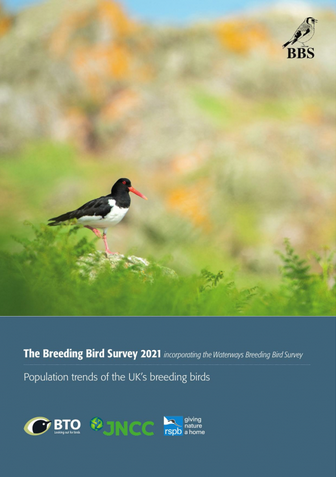
The latest excellent BBS (and WBBS) report arrived through my letterbox last week. It’s a concise and beautiful report which is a model of comprehensible summary of somewhat complex data.
If you want to know how a wide variety of commoner and widespread birds are faring in the UK, and often in individual nations or even regions of the UK (where sample sizes allow) then this is the place to visit and the report is available online – click here.
You will, if you scan the results carefully, spot some interesting results and you might wonder whether they are true (they probably are given the design and the sample sizes involved) but you can always wait a few more years and have another look then. For example, in England, the 25-year trend for Sparrowhawk (-33%) is very similar to that of the Lapwing (-34%) and the confidence intervals for the two overall figures are very similar too. I look forward to a whole load of ‘real country people’ pointing out that this is strong evidence for Lapwings being important predators of Sparrowhawks and that Sparrowhawks would have declined even more were it not for the caring efforts of gamekeepers to maintain their numbers.
I mean, of course, that the trends identified in this report don’t tell us why species have changed but they provide very good indications of what the trends are, and year by year except where foot-and-mouth (2001) or covid (mostly 2020) intervene to reduce the wealth of data in a particular year. Maybe the table of number of observers isn’t the one that normally provides the most gripping results, but it does demonstrate that in 2021 very nearly 4000 BBS squares were surveyed by over 2500 individuals (one of whom is me). Those UK figures show a considerable recovery from the covid year when just over 2000 squares were covered by 1400+ observers. This is a good bounce back of volunteer effort but I did note that the 2021 levels were lower than 2017-19 inclusive for squares covered and 2013-2019 inclusive for observers. The covid challenge did knock the survey back for more than just a single year (but nowhere near terminally).
My local BBS regional organiser for Northants is a star – he is very helpful, very attentive and very appreciative. Thank you Barrie! Looking at the names of well over 100 regional organisers of the BBS listed on the back cover I reckon that, from their names, men outnumber women by more than four to one. I’d hazard a guess that their ranks are dominated by the ‘slightly older’ members of society rather than the ‘on the young side’ and I feel fairly confident that when they filled out the last census they ticked something akin to ‘White British’. And so, I reckon, would most of the 2500 volunteers who collected the data but maybe I am wrong (I’d be surprised). I’ll just leave that observation sitting there.
I’d be surprised if you could allocate these six 25-year species trends (+234%, +100%, -2%, -25% and -46%) to their species, which are in alphabetical order: Gadwall, Goosander, Magpie, Peregrine and Tree Sparrow (look them up in table 2 here).
The online data entry and data availability for participants in the scheme are superb too.
[registration_form]